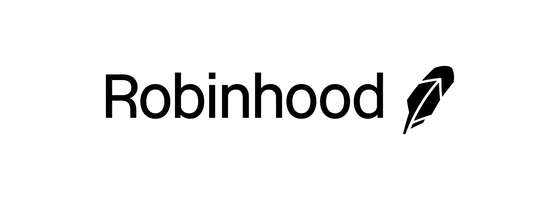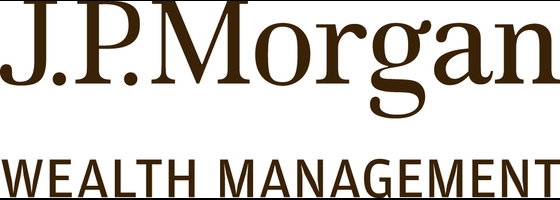Our evaluations and opinions are not influenced by our advertising relationships, but we may earn a commission from our partners’ links. This content is created independently from TIME’s editorial staff. Learn more about it.
Congress passed the Setting Every Community Up for Retirement Enhancement Act (SECURE Act) in 2019 to help Americans better prepare for retirement. In the final days of 2022, the SECURE 2.0 Retirement Savings Act (aka "SECURE Act 2.0") was signed into law, expanding the SECURE Act of 2019 and further strengthening the retirement system.
It adds dozens of new provisions designed to make it easier for Americans to save for retirement in individual retirement accounts (IRAs) and workplace plans. Some changes kicked in this year, while others will start in 2024, 2025, 2026, and 2027.

Robinhood IRA
Robinhood IRA
- $0 management fees
- $0 commission fees
- IRA Match Early Withdrawal Fee may apply
What does the SECURE Act 2.0 accomplish?
A 2023 Federal Reserve survey found that almost three-fourths of adults who aren’t retired have at least some retirement savings. However, 28% (up from 25% in 2021) have none whatsoever. At the same time fewer than a third (31%) of those who aren’t retired feel their retirement savings are on track, down from 40% in 2021.
Lower savings—combined with longer lifespans—are fueling a retirement security crisis in the U.S. The SECURE Act 2.0 is the government's latest attempt to improve retirement outcomes for millions of Americans.
Key retirement provisions of the SECURE Act 2.0
Dozens of provisions in the SECURE Act 2.0 make it easier to save money and better prepare for retirement. Here's a look at nine key changes. The first four apply to people who are in or near retirement, while the remaining five apply to those who are still years away from retiring.
1. Changes to required minimum distributions
There are a number of changes regarding required minimum distributions (RMDs). The age for starting them increased from 72 to 73 beginning Jan. 1, 2023, and Section 107 of the act bumps that up to age 75 in 2033. This is excellent news if you don't need to tap into your retirement savings accounts: It gives you more time to grow your nest egg and benefit from the power of compounding. Another helpful step: The penalty for not taking an RMD decreased from 50% to 25% of the RMD not taken—or 10% if you correct the mistake within two years. Also, RMDs for Roth 401(k) accounts during the participant's lifetime will be eliminated starting in 2024.
2. Higher catch-up contributions
People aged 50 or older can make a $7,500 catch-up contribution to a workplace plan. Section 109 states that starting Jan. 1, 2025, the catch-up contribution to workplace plans increases to $10,000 annually for those aged 60 to 63 (the amount is indexed to inflation). Also, beginning in 2026, Section 603 states that all catch-up contributions to workplace plans must go into Roth accounts in after-tax dollars if you're 50 or older and earned more than $145,000 the previous year. IRAs currently allow a $1,000 catch-up contribution if you're 50 or older, but the amount will be indexed to inflation starting in 2024, according to Section 109.
3. Employer matches
Employers have been allowed to make matching contributions to employees' Roth 401(k)s, but the matches have been with pretax dollars that had to go into a pretax account, such as a traditional 401(k). Under the SECURE Act 2.0 Section 604, employers can now make matching contributions directly to an employee's Roth 401(k)—meaning the money will grow tax free, with tax-free distributions in retirement. However, the provision is optional, and employers may still elect to make pretax matches.
4. Qualified charitable distributions (QCDs)
The SECURE Act 2.0 expands the rules for qualified charitable distributions (QCDs), which are direct funds transfers from IRAs to qualified charities. Section 307 states that, starting in 2023, people aged 70½ or older can elect as part of their QCD a one-time gift up to $50,000, adjusted annually for inflation, to a "split-interest entity" that pays a fixed percentage for life. The split-interest entity can be a charitable remainder annuity trust (CRAT), charitable gift annuity, or charitable remainder unitrust (CRUT).
5. Automatic 401(k) enrollment
The SECURE Act 2.0 requires most companies to enroll eligible employees into the company's retirement plan automatically. Beginning in 2025 Section 101 states that employers starting a new 401(k) or 403(b) plan must automatically enroll eligible employees at a contribution rate of at least 3%. Note that companies in business for fewer than three years and those with 10 or fewer employees are excluded from the requirement.
6. Emergency 401(k) distributions
Section 127 says that, starting in 2024, employers can offer non–highly compensated employees (NHCEs) the option to link their retirement plan to an emergency savings account. (According to the Internal Revenue Service (IRS), a highly compensated employee owns at least 5% of the company or earns over $150,000.) Annual contributions are limited to $2,500 (or less, as set by the employer), and the first four withdrawals a year aren't subject to taxes or penalties.
7. 529-to-Roth IRA conversions
If you have a 529 college savings plan, you previously had to make a nonqualified withdrawal—and pay a penalty—to access unused funds. The penalty has kept many families from funding 529s to levels needed to cover rising education costs. The SECURE Act 2.0 Section 126 addresses this by allowing 529 beneficiaries to roll over up to $35,000 from a 529 account into a Roth IRA. The 529 must be at least 15 years old, and rollovers are subject to Roth IRA annual contribution limits, meaning that you can't roll over the whole $35,000 at one time.
8. Student loan matching contributions
Employer matching contributions are a valuable perk if you can contribute enough to earn a partial or full match. However, people saddled with student loan debt may have trouble contributing to a 401(k) or other employer-sponsored retirement plan, which means they could miss out on what's essentially free money. According to the Education Data Initiative, borrowers have an average of $37,338 in federal student loan debt and $54,921 in private student loan debt.
Starting in 2024 SECURE Act 2.0 Section 110 will allow employers to make retirement plan matching contributions based on employees' qualified student loan payments. Employers can match contributions to elective deferrals and student loan payments but not in excess of the total matching contributions available in the plan.
9. Saver's Match
Starting in 2027 low-to-middle–income earners will be eligible for a federal matching contribution of up to $2,000 annually. Secure Act 2.0 Section 103 replaces the Saver's Credit with the “Saver’s Match,” pivoting from a tax credit on your return to a federal contribution that gets deposited into your IRA or employer-sponsored retirement plan. Income limits apply: You can qualify if you earn up to $35,500 as a single taxpayer or married filing separately, $53,250 as a head of household filer, or $71,000 if you file a joint return. Recipients can designate which account gets the matching money.
TIME Stamp: Financial literacy matters to retirement savers
Study after study confirms a correlation between financial literacy and retirement readiness. For example, the Goldman Sachs Asset Management Retirement Survey & Insight Report found that savers who are more financially literate tend to have less stress when it comes to managing money and the financial choices that come with retirement. Moreover, the report found that investors who understand key financial concepts were better equipped to manage competing financial priorities that could otherwise crowd out retirement savings.
Similarly, a recent Federal Reserve study showed that people with lower levels of financial literacy found it harder to save for retirement. And the seventh annual TIAA Institute-GFLEC Personal Financial Index (P-Fin) found that Americans with very low levels of financial literacy are twice as likely to have decreased their retirement savings—and more than four times as likely to have stopped saving for retirement compared with their peers who have very high levels of financial literacy.
"Every year, we say the findings are troubling, but this year, more than ever, we see how low levels of financial literacy in a volatile economy can lead to problems," says Annamaria Lusardi, GFLEC's founder and academic director. "It's important we focus on helping people of all ages, races, and genders, especially the ones who are the most vulnerable."
The SECURE Act 2.0 provides more opportunities to save and better prepare for retirement, but everyone's financial situation differs. To understand how the SECURE Act 2.0 applies to you, consider working with a financial advisor, such as J.P. Morgan, or an online platform such as Empower that offers retirement planning, budgeting, and wealth management, with 24/7 support and access to a team of financial advisors.

J.P. Morgan Personal Advisors
J.P. Morgan Personal Advisors
Details
- Connect with a J.P. Morgan team member to schedule a free financial planning session. Call 833-930-4515 or fill out our contact form and we'll be in touch.
- Work with a team of fiduciary advisors who will create a personalized financial plan, match you to expert built portfolios and provide ongoing advice via video or phone.
- Partner with an advisor to build a personalized financial plan based on what's important to you—whether that's paying off debt, opening a business or saving for a big purchase.
- Get matched to expert-built portfolios, and receive ongoing advice and annual check-ins to ensure your plan is on track.
- Our team of advisors act as fiduciaries so you can be confident that any advisor you work with has your best interest at heart.
- Manage all of your banking, investing and borrowing, and conveniently transfer money online and on the Chase Mobile® app.
- Once we understand your financial picture, risk tolerance and time horizon, we’ll recommend a professionally designed investment portfolio that meets your needs and automatically rebalance as the market shifts.
INVESTMENT AND INSURANCE PRODUCTS ARE: NOT A DEPOSIT • NOT FDIC INSURED • NO BANK GUARANTEE • MAY LOSE VALUE
Disclosures
INVESTMENT AND INSURANCE PRODUCTS ARE: NOT A DEPOSIT • NOT FDIC INSURED • NO BANK GUARANTEE • MAY LOSE VALUE
J.P. Morgan Wealth Management is a business of JPMorgan Chase & Co., which offers investment products and services through J.P. Morgan Securities LLC (“J.P. Morgan”), a registered broker dealer and investment adviser, member FINRA and SIPC. TIME Stamped is a publisher of J.P. Morgan, (“Publisher”). The Publisher will receive compensation from J.P. Morgan if you provide contact details to speak with a J.P. Morgan representative. Compensation paid to the Publisher will be up to $500 per completed contact form. Compensation provides an incentive for the Publisher to endorse J.P. Morgan and therefore information, opinions, or referrals are subject to bias. J.P. Morgan and the Publisher are not under common ownership or otherwise related entities, and each are responsible for their own obligations. Investing involves market risk, including possible loss of principal, and there is no guarantee that investment objectives will be achieved.
Frequently asked questions (FAQs)
When will provisions of the SECURE Act 2.0 take effect?
The provisions of the SECURE Act 2.0 don't take effect all at once. Some changes went into effect as of Jan. 1, 2023, and others will roll out over the next four years.
How does the SECURE Act 2.0 impact when I start taking RMDs?
The SECURE Act 2.0 changes the age at which you must start taking RMDs. The age increased from 72 to 73 beginning Jan. 1, 2023, and bumps up to age 75 starting in 2033. If you turned 72 in 2022 or earlier, you'll have to continue taking RMDs as scheduled. If you're turning 72 in 2023 and have already scheduled your RMD, you can update your withdrawal plan to take advantage of the extra RMD-free year.
What does the SECURE Act 2.0 have to do with Social Security?
The SECURE Act 2.0 doesn't affect Social Security benefits or taxes. However, more than 71 million Americans will see a 3.2% cost-of-living (COLA) increase in their Social Security benefits and Supplemental Security Income (SSI) payments in 2024. The increase will start with benefits that Social Security beneficiaries receive in January 2024, and increased SSI payments will begin with the Dec. 29 payment this year.
What does the SECURE Act 2.0 mean for employers?
The SECURE Act 2.0 brings lots of changes for employers, including provisions related to automatic enrollment in employer-sponsored retirement plans, new RMD rules, higher catch-up contribution limits, student loan matching contributions, emergency savings, and the Saver's Match federal matching contribution.
INVESTMENT AND INSURANCE PRODUCTS ARE: NOT A DEPOSIT • NOT FDIC INSURED • NO BANK GUARANTEE • MAY LOSE VALUE
J.P. Morgan Wealth Management is a business of JPMorgan Chase & Co., which offers investment products and services through J.P. Morgan Securities LLC (“J.P. Morgan”), a registered broker dealer and investment adviser, member FINRA and SIPC. TIME Stamped is a publisher of J.P. Morgan, (“Publisher”). The Publisher will receive compensation from J.P. Morgan if you provide contact details to speak with a J.P. Morgan representative. Compensation paid to the Publisher will be up to $500 per completed contact form. Compensation provides an incentive for the Publisher to endorse J.P. Morgan and therefore information, opinions, or referrals are subject to bias. J.P. Morgan and the Publisher are not under common ownership or otherwise related entities, and each are responsible for their own obligations. Investing involves market risk, including possible loss of principal, and there is no guarantee that investment objectives will be achieved.
Empower Personal Wealth, LLC (“EPW”) compensates Time Stamped for new leads. Time Stamped is not an investment client of Empower Advisory Group, LLC.
The information presented here is created independently from the TIME editorial staff. To learn more, see our About page.

